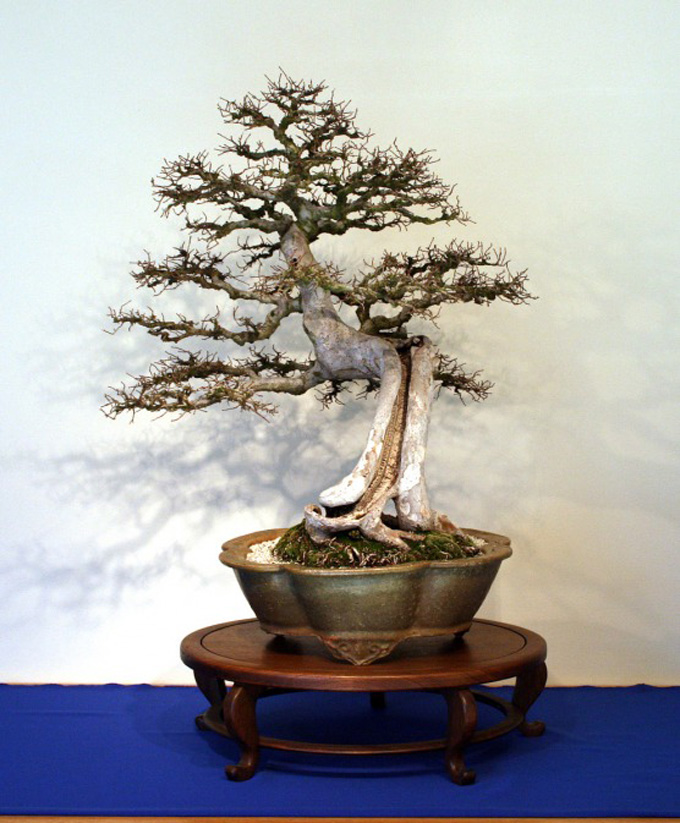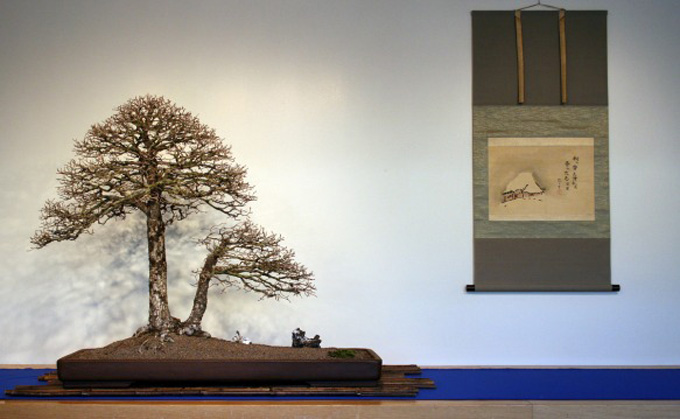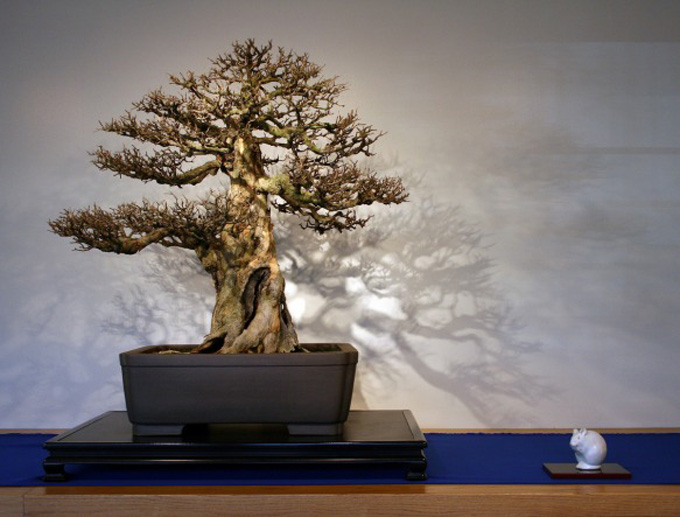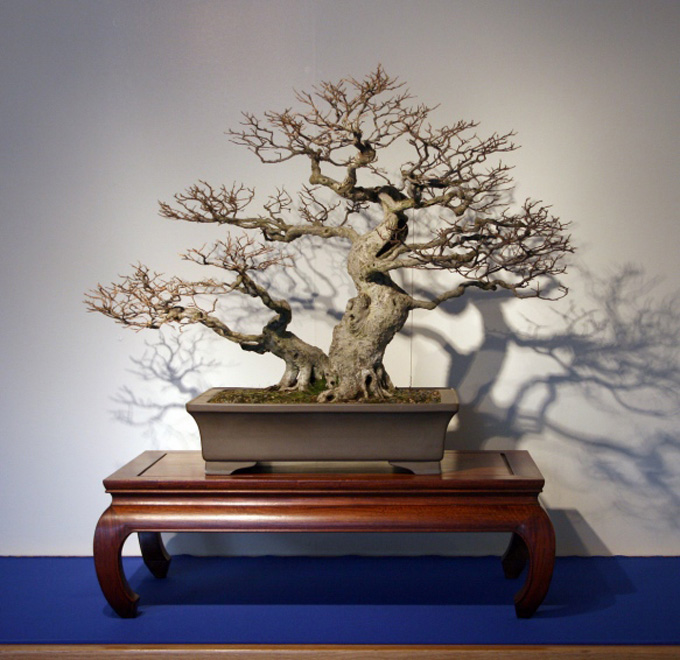 Chinese Elms, Ulmus parvifolia. In training since 1901. This remarkable bonsai was donated to the National Bonsai & Penjing Museum by Yee-sun Wu. This and the other photos in this post are from Capital Bonsai, the NB&P Museum’s excellent new blog.
Chinese Elms, Ulmus parvifolia. In training since 1901. This remarkable bonsai was donated to the National Bonsai & Penjing Museum by Yee-sun Wu. This and the other photos in this post are from Capital Bonsai, the NB&P Museum’s excellent new blog.
Sheer elegance
Somehow I missed the December 21st post at Capital Bonsai. It titled ‘It’s the most wonderful time of the year.’ Though the song doesn’t do that much for me, the sheer elegance of the leafless trees in the post most certainly do. And though winter is over, or nearly over, for most of us, it was -8F yesterday morning here in northern Vermont, and all of our deciduous trees are still at their leaf-bare finest.
Aarin Packard and John Naka speak for themselves
Here’s a quote from Aarin Packard, Capital Bonsai‘s prime mover, about deciduous bonsai in the winter:
“I have head on multiple occasions that winter is the favorite time of year for the more discerning bonsai enthusiasts. John Naka described a bonsai in leaf as “a beautiful woman with her cloths on”… Only when a tree is leafless can you fully appreciate the level of training that a deciduous bonsai has had. That could be why the most prestigious bonsai exhibition in the world, the Kokofu ten, is held during the winter.”
Shadows and light
A while back we featured a post on light and shadows. This post could be considered a second installment on the theme.
 Cedar Elm, Ulmus crassifolia, Donated to the National Bonsai and Penjing Museum
Cedar Elm, Ulmus crassifolia, Donated to the National Bonsai and Penjing Museum by Arch Hawkins (co-founder of the Austin Bonsai Society). In training since 1981. NOTE: THANKS TO ROGER CASE (SEE COMMENTS) AND THE COLUMBUS BONSAI SOCIETY, WE HAVE CONFIRMED THAT THIS TREE BELONGED TO KEITH SCOTT AND WAS DONATED TO THE NATIONAL ARBORETUM BY KEITH.
 Pomegranate, Punica granatum, Donated by Alice Naka, In training since 1963.
Pomegranate, Punica granatum, Donated by Alice Naka, In training since 1963.
 Hornbeam, Carpinus tschonoskii, Donated by Minoru Koshimura, In training since 1935.
Hornbeam, Carpinus tschonoskii, Donated by Minoru Koshimura, In training since 1935.
Wayne, really nice trees! The ramification is so intricate. Whose caring for these trees?
Thanks for posting these! I really like the sheer individuality of the elm. And the light-and-shadow pics are both pleasing and thought-provoking.
Hi Owen,
Jack Sustic is the curator of the National Bonsai and Penjing collection, and Aarin Packard is the assistant curator. Their excellent blog, Capital Bonsai, is the handiwork of Aarin.
Thanks Steve,
Yeah, I think both the photos and the bonsai are art for sure. An ‘art-on-art’ effect.